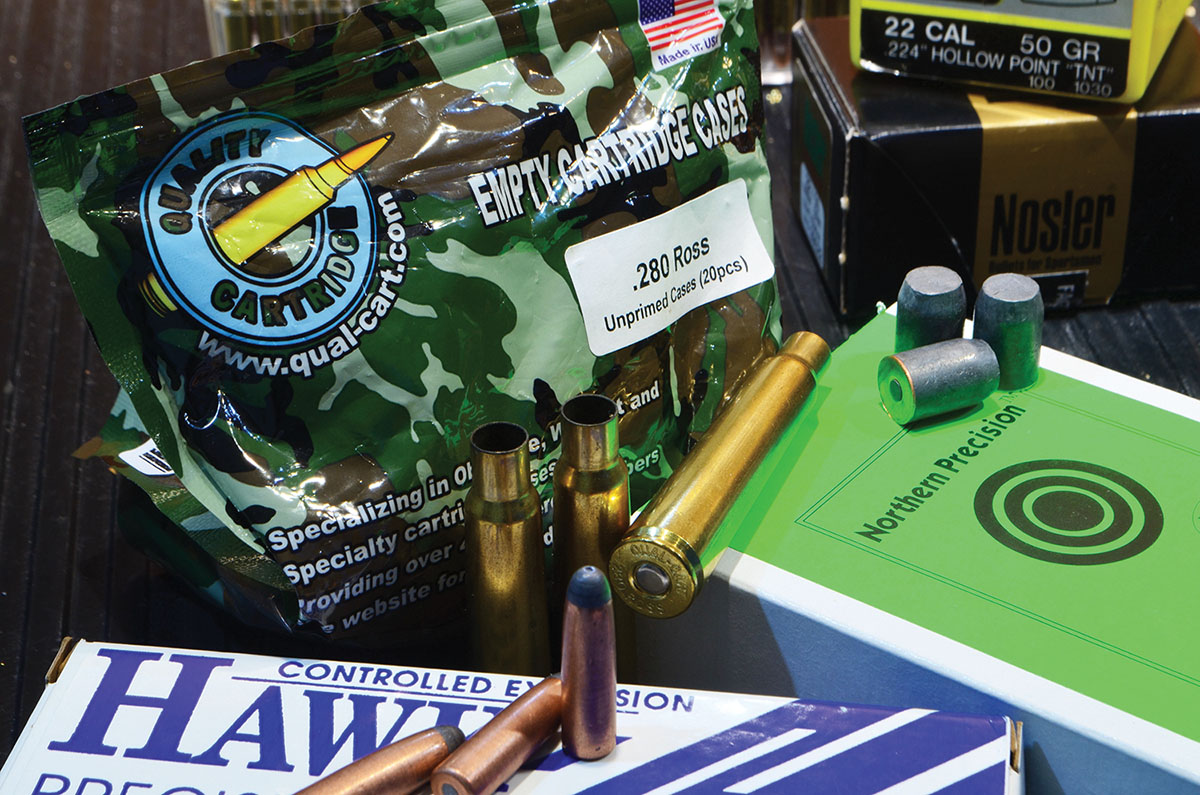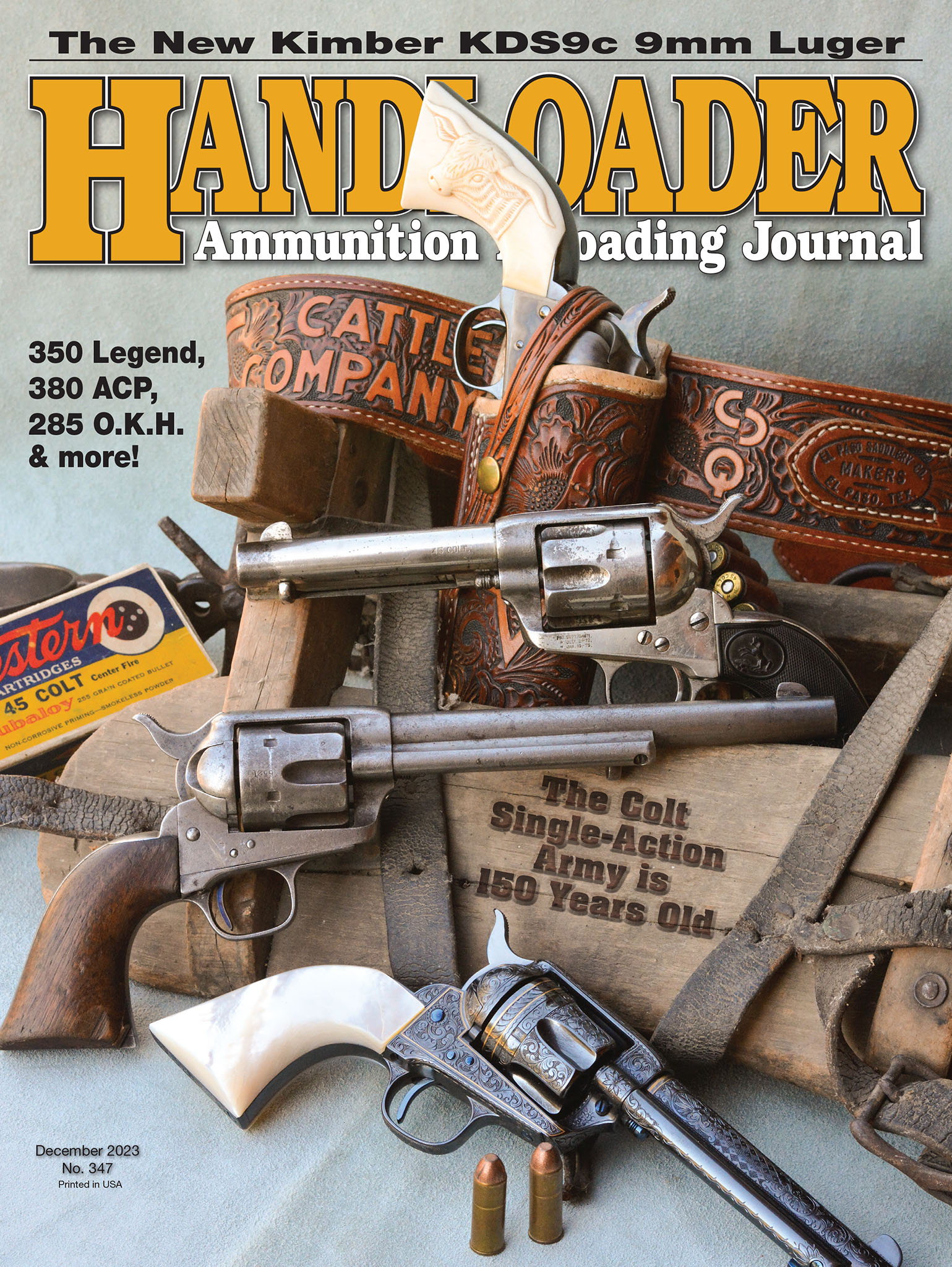In Range
More, But Maybe Not Better
column By: Terry Wieland | December, 23

It has been mentioned more than once that, in terms of components, we’re living in a golden age of handloading. More powders, more bullets, more calibers (a mixed blessing), and above all, more gunmakers making more rifles and handguns.
The U.S. being, by several orders of magnitude, the largest civilian market for such things, there are companies in every manufacturing country producing something they can export to the U.S. We have bullets, brass and loaded ammunition from Serbia (PPU), powder and bullets from Finland (Vihtavuori), ammunition from Sweden (Norma), guns from France (Chapuis), gunpowder and rifles from Czechia (CZ and Shooters World), any number of things from Germany and Austria, smokeless powder from Canada and obsolete brass from Australia. That list is just off the top of my head – things I can see with a glance around my loading room. It’s nowhere near complete.
Over the last few weeks, I’ve been working with a couple of cartridges that are neither new nor all that old, in rifle terms. Elsewhere in this issue, there is an article about developing loads for a particular military Mauser K98, the Czech-made G33/40. It is, of course, an 8x57mm JS, and while, to the best of my knowledge, no major American manufacturer ever chambered a rifle for it, there are so many 8x57s floating around from post-war military surplus sales that it has to rank pretty high on the “most popular cartridge” list.
When I went looking for components to work with, I found that virtually every ammunition maker produces either loaded ammunition or brass and 8mm bullets of the necessary .323-inch diameter are almost embarrassingly numerous. Finding bullets of exactly the right weight and configuration was another matter, but there were so many around that were reasonably close that creating a usable load was well within reach.
Would that have been possible in the 1960s? I can’t tell you from memory because I did not load 8x57mm back then. But I almost did. I was advised by the guy who gave me my first lessons in handloading that finding brass and bullets would not only be difficult, it would also be pretty expensive for a kid who was financing his shooting addiction with money made working on the farm next door. (I bought a semi-sporterized Enfield P17 instead and embarked on a lifelong love affair with the 30-06.)
The other cartridge I’ve been playing with is not as old as the 8x57, but the 220 Swift has been technically obsolescent more than once since it was introduced by Winchester in 1935. When it was partly discontinued by Winchester in 1961, and then dumped completely in 1963, writers of the day found solace in the fact that even if Winchester was no longer making ammunition, they would still produce 220 Swift brass. This was important because it cannot be easily reworked from a related cartridge case, being based on the arcane 6mm Lee Navy.
For a lengthy period, through the 1960s and into the 1970s, Winchester was the only source of brass except for sporadic imports of ammunition from Norma in Sweden. Norma makes fantastic brass, but it’s only fantastic if you can get it.
Fortunately for Swift lovers, Ruger jumped in around 1972 with a special edition chambering of the 220 Swift, just as it had done earlier with the 7x57mm; it sold so well that the chambering became a standard offering in the Model 77mm, and this induced other ammunition makers to start producing 220 Swift as well. Later still, Remington chambered its Model 700 for the Swift, which presumably was the catalyst to add it to its own ammunition line. A few years on, all of the above had foresworn the Swift, but by then, so many rifles were in use that it was always worth someone’s while to make brass.
Fortunately, small specialist companies like Nosler and Hornady had grown into large specialist companies with the capability of producing Swift ammunition and components to cater to a relatively small but exceedingly eager, maybe even fanatical, market. So here I am, working with a 1953-vintage Winchester Model 70, and I have Nosler, Hornady and Remington brass, as well as loaded ammunition from both Hornady and Remington. Compared to the situation in 1970, the components I have available are almost embarrassing.
But there is a downside.
At a guess, I would say I get 10 to 12 press releases a week, mostly by email, announcing this or that new product, or variation on an old product, many from manufacturers I’ve never heard of. The volume increases substantially ahead of the SHOT Show, often reaching a dozen a day, occasionally half a dozen an hour (literally).
In every case, the object of the game is to get publicity for the product, either by trying it out and writing about it, or simply extolling it sight unseen. As a writer, the first question I need to answer is whether the guy is legit. Does the company actually exist? Does the product? Is either or both still going to be around in six months?
In an age of CNC machinery, computerized design, internet websites and Photoshop, the ability to fabricate a credible company out of nothing, in a matter of days if not hours, is unlike anything ever before seen in history. To be fair, most new companies are legitimate, or at least want to be, but that doesn’t mean they are adequately financed or technologically proficient enough to survive.
A friend of mine saw an ad for a company in Texas that was allegedly producing brass for any number of obscure and obsolete cartridges, foreign and domestic. It was all produced from the finest bar stock, turned on the latest CNC, etcetera, etcetera. He sent them an order for a rare English caliber, along with several hundred dollars in advance. The check was cashed, but nothing further was heard; emails were not answered, calls were not returned. Three years later, he saw a notice that the company, such as it was or ever had been, was no more.
When an outfit has no discernible track record and demands full payment in advance, that’s a good indication you might want to look elsewhere, or at least demand some ironclad references. Another red flag is a company or individual who has found “the answer” and that answer is the complete polar opposite of everything every other expert has believed for the last 150 years.
I remember one such, related to shotgunning, in which this “nationally renowned” instructor insisted that if you assumed a stance with your right foot forward (instead of left, for a right-handed shooter) you’d never miss another bird!
In the rifle field, it’s been accepted since the days of Sir Samuel White Baker and his work with Henry Holland that a big-game bullet needs to hold together and penetrate to be effective in all but fluke cases. A few years ago, a company set up shop at SHOT, complete with DVDs from Africa, purporting to show that the most effective bullets were those that fly apart on impact. This bizarre claim was backed up with an even more bizarre story of 14 consecutive one-shot kills on Cape buffalo. After 10 minutes of talking to the evangelistic proprietor, I walked away and never looked back.
Alas, there are more such people around than ever before, and their numbers seem to be increasing by the day. Such are the blessings of the internet.
Having written all this, I should end by listing some small companies with whom I’ve worked that definitely do NOT fall into this category. Quality Cartridge, of North Carolina, is reputable and trustworthy, and their brass is excellent. As with most others these days, they are seriously backlogged, but the brass I’ve tried – 280 Ross and 450 Ackley, particularly – has been a lifesaver. When I was working on the 280 Ross, Hawk Bullets provided some perfect projectiles.
Another is Bill Noody, of Northern Precision Bullets in upstate New York. Bill has helped me on half a dozen projects over the past few years, and has never failed to come through.
This doesn’t prove that all small companies are good, but it certainly shows that some are, and that it’s worth the search.


